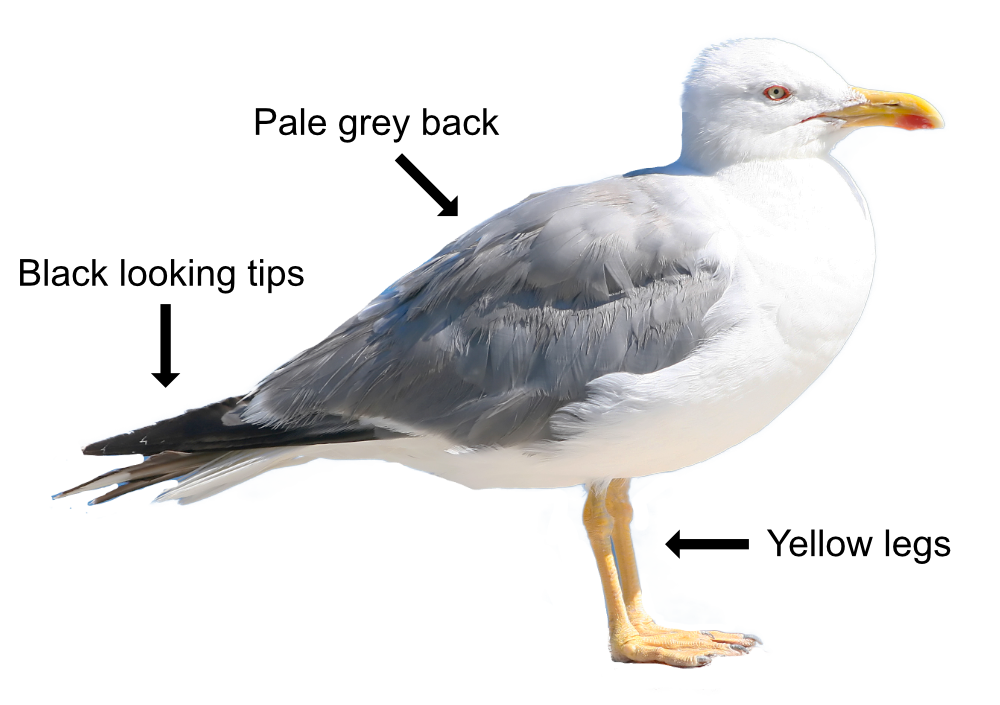
The Yellow-legged Gull is the size of a Herring Gull and can easily be confused. It has only recently been recognised as a separate species, having previously been thought of as an odd-looking Herring Gull. It often stands apart from other gulls to make our lives easier. It is a rare visitor, mainly seen on the south coast. Numbers are slowly increasing with global warming as they move north from their more normal Mediterranean areas.
They look like a Herring Gull though have yellow legs instead of pink and more black on the wing tips with smaller white 'mirrors'. With their yellow legs, they can look like a Lesser Black-backed Gull though their back is a paler grey. A really tricky one to single out. Their call is a laughing "Kyow, kyow!"

Like all good Gulls, it feeds on a wide variety of food including carrion and loves a good rubbish tip. They also have the habit of stealing food fished by other birds, chasing them, and bothering them until they drop what they have caught.
Yellow-legged Gulls very rarely breed in Britain. The nest is a mound of vegetation on a cliff ledge or building roof. The 2-4 eggs are incubated by both parents and hatch after 30 days. The nest is fiercely defended and they will attack anything that gets too close by diving from above. The youngsters soon leave the nest but remain close by. Mum and dad feed them with regurgitated food until they can fly 35-40 days later and become fully independent. They will take 4 years to become mature adults, in the meantime being bolshy teenagers.
About 800 are seen here each year. They are mainly found in Europe, the Middle East and North Africa. Many birds remain in the same area all year round, though the ones seen in Britain generally move to the warmer south in winter.
Their Latin name is 'larus michahellis' where 'larus' is Latin for 'gull' or large seabird and the 'michahellis' is in honour of the German zoologist Karl Michahelles. Good to have a bird named after you. Not so good that it eats on rubbish tips.